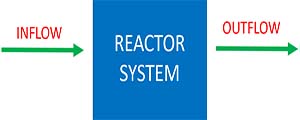Reaction Engineering Basics, Fundamentals with Introduction
Reaction engineering is a mandatory subject in chemical engineering and it covers kinetics of reactions, mass end energy balance of a reactor. Also reaction engineering helps to design different types of reactors.
Reaction engineering combines the study of chemical kinetics with the reactors in which the reactions occur inside the reactor.
Introduction to Reaction Engineering
If you are going to develop or design an any reactor as your chemical engineering design, your knowledge in reaction engineering should be broad and good.
This subject involves mass balance, molar balance, energy balance and reactions of chemical constituents.
Sections of reaction engineering subject
Reaction engineering content is listed below and they are discussed shortly in this tutorial. Complete lessons of them are discussed in another tutorials.
- Write reaction rate equation for elementary reaction and observe kinetics of reaction.
- Identify different reactors
- Apply mass, molar and energy balance to reactors
- Mathematical simulations for reactors to explain behaviour of reactor
Reaction rate equation for a elementary reaction
An equation for a elementary reaction is written as a function of concentrations. Reaction rate depends on so many factors such as temperature, pressure, concentration, catalysts, physical state and more. Initially, due to higher concentrations of reactants, reaction rate is high and decrease with time.
What is conversion?
In a reaction, reactants are converted to products. Conversion tells us, how much reactants are converted to products as a percentage.
There is a reaction A → B. Initially, there was 1 mol of A and after product were taken out, there were remaining 0.12 moles of A. So conversion of A is 88%.
Conversion is significant parameter in reactor because it decides the amount of production. That decides the profitability of the industry. If conversion is good close to 100%, that is very good.
Where reaction engineering is applied?
- in petroleum refining
- In pharmaceutical industry
- In microelectronics industry
A simple illustration of reactor system is shown below.

Explanation of reactor system
There are four species ( A,B,C,D ) in inflow. All of them has different reactions as below in the reactor.
A + B → E + F
C + D → A + F
First reaction, A and B species are reacted ( amount of A and B is reduced. This is also called as consumption ).
But in the second reaction, A is formed again by reaction between C and D. Otherwise A is generated again in the reactor (Generation).
In reaction engineering, we are going to construct a mathematical model to describe reaction and find reaction time, conversion, input and output flow rates, energy requirements and more.
Most common industrial reactors
- Batch reactor (BR)
- Continuous stirred tank reactor ( CSTR )
- Plug flow (tubular) reactor (PFR)
- Packed-Bed Reactor (PBR)
We will learn more about these reactors in detail in a next lesson.
Apply molar balance to industrial reactorsBatch reactor
A batch reactor is used for small-scale operation and have following characteristics and advantages. The reactor can be filled) through the holes at the top and products are taken after the reaction. Reaction can be completely finished or not.
- for testing new processes that have not been fully developed.
- for the manufacture of expensive products.
- for processes that are difficult to convert to continuous operations.
- Conversion rate is high
Continuous flow reactors
Continuous flow reactors works always under steady state conditions. There are three types of continuous flow reactors. A good mixing is assumed inside the reactor and every point of inside reactor is consider as similar.
- Continuous stirred tank reactor ( CSTR )
- Plug flow (tubular) reactor (PFR)
- Packed-Bed Reactor (PBR)
Molar balance
As mass conservation law we apply molar balance for reactor considering a boundary. Molar balance equation contains several terms and they are explained in detail in applying molar balance equation for reactors tutorial.
In + Generation = Out + Consumption + Accumulation + Loss
Energy balance
We are discussing about reactions. So we should definitely talk about energy. Reactions can be exothermic or endothermic. According to that, supplying additional heat or removing heat is decided. Also temperatures of raw materials, reactors and products should be calculated.
Mathematical modelling and computer simulations
To describe reactor behaviour, differential equations are used. We use mathematical programming languages like Matlab to solve differential equations. Aspen Plus is also used for process simulations.